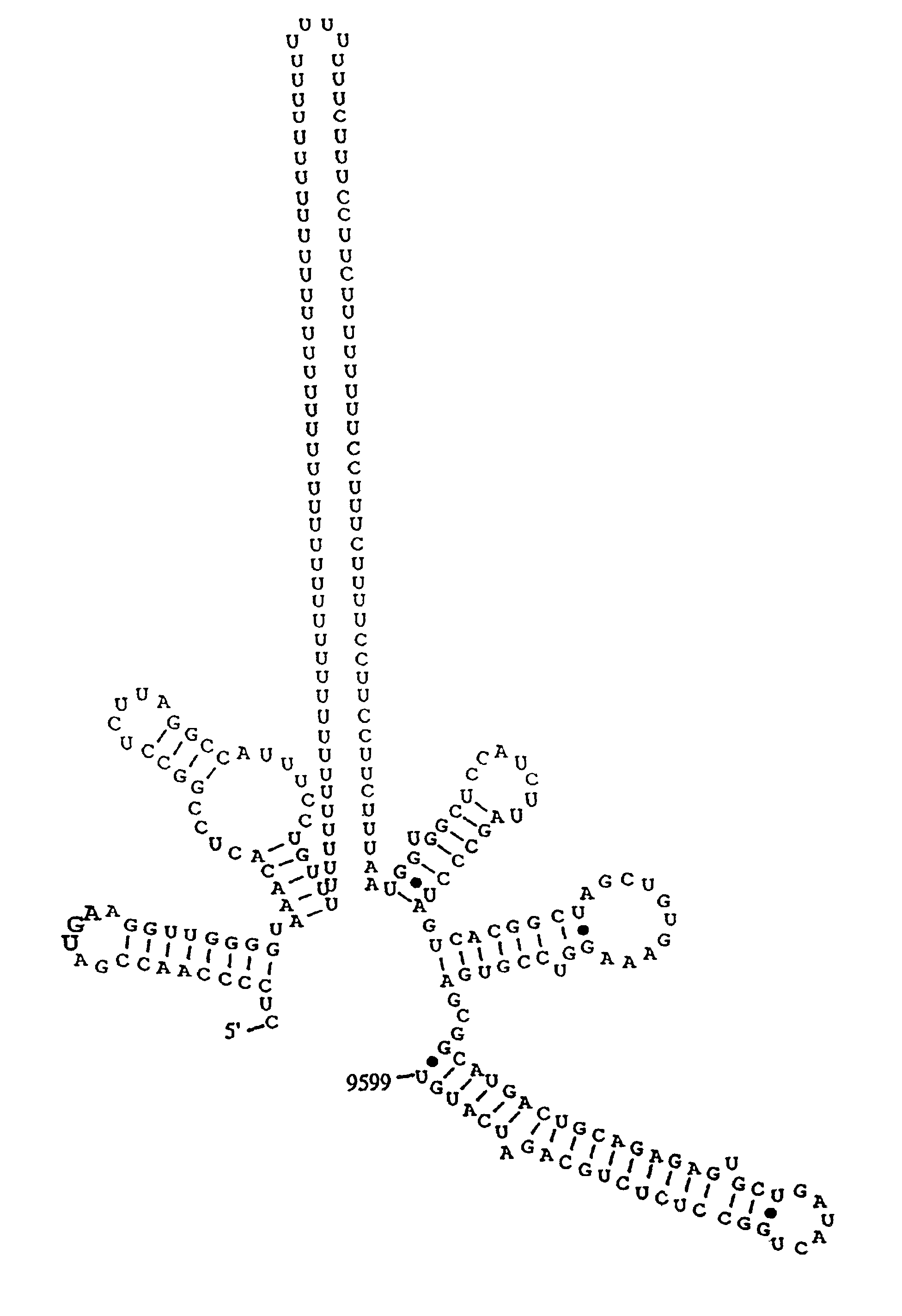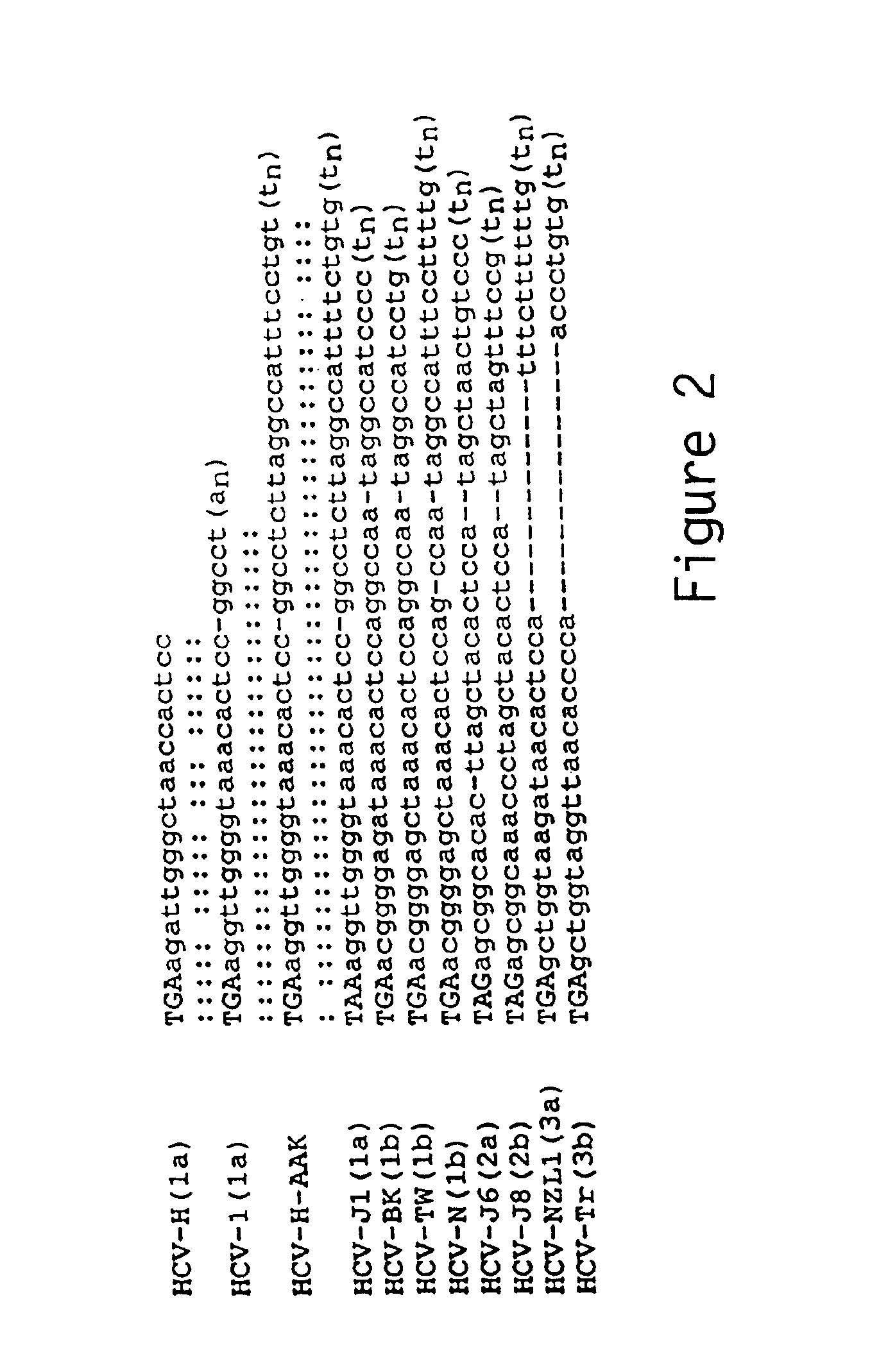3′terminal sequence of hepatitis C virus genome and diagnostic and therapeutic uses thereof
a technology of hepatitis c virus and 3′-terminal sequence, which is applied in the field of new nucleotide sequence elements, can solve the problems of hampered studies, difficult to obtain unambiguous evidence of virus replication in these tissues in vivo, and lack of cell culture systems able to support efficient virus replication, so as to alter combat the adverse effects of hcv in mammals
- Summary
- Abstract
- Description
- Claims
- Application Information
AI Technical Summary
Benefits of technology
Problems solved by technology
Method used
Image
Examples
example 1
[0153]Structure of the HCV-H 3′ NTR. Determination of the extreme 3′ terminal HCV sequences presented a greater challenge. Due to limited quantities of HCV genome RNA, the classic method of 3′-end labeling and direct RNA sequence analysis has not been feasible. One of the first reports suggested that HCV RNAs contained 3′ terminal poly (A) tracts (for HCV-1) Han et al (1991) used tagged oligo (dT) primers for cDNA synthesis followed by PCR amplification, cloning and sequence analysis. This is not an acceptable method for 3′ end determination as it already presupposes a 3′ poly (A) or polypurine tract and would select for such RNAs even if they were present in low abundance. Some reports utilized E. coli poly (A) polymerase to add 3′ homopolymer tracts prior to oligo (dT)-primed cDNA synthesis and found evidence of a 3′ terminal poly (U) (i.e., Kato et al, 1990) or isolated 3′ clones with poly (U) tracts from randomly primed cDNA libraries. To actually determine the 3′ terminal seque...
PUM
| Property | Measurement | Unit |
|---|---|---|
| Fraction | aaaaa | aaaaa |
| Volume | aaaaa | aaaaa |
| Density | aaaaa | aaaaa |
Abstract
Description
Claims
Application Information
 Login to View More
Login to View More - R&D
- Intellectual Property
- Life Sciences
- Materials
- Tech Scout
- Unparalleled Data Quality
- Higher Quality Content
- 60% Fewer Hallucinations
Browse by: Latest US Patents, China's latest patents, Technical Efficacy Thesaurus, Application Domain, Technology Topic, Popular Technical Reports.
© 2025 PatSnap. All rights reserved.Legal|Privacy policy|Modern Slavery Act Transparency Statement|Sitemap|About US| Contact US: help@patsnap.com



